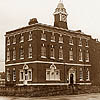 |
Wolverhampton's Listed Buildings
Prince Albert's Statue
Queen Square
|
 |
|
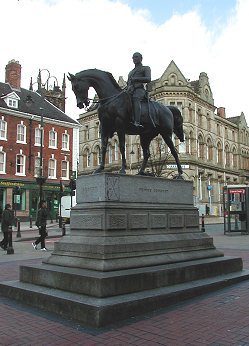
Listing: 1866. By T. Thorneycroft. Inscription:
Albert, Prince Consort, born 1819, died 1861. Erected by subscription. The
inauguration is said to have been Victoria's first public engagement after
Albert's death.
Literature:
Pevsner: notes the statute as 1866 by T.
Thorneycroft
Noszlopy and Waterhouse, Public Sculpture of
Staffordshire and the Black Country, Liverpool UP, have a long account
at p. 203.
Comment: When Queen Victoria unveiled this statute it was
greeted, not with the expected cheers, but with a stunned silence, followed by
gasps of dismay. The sculptor had made a gross error in the depiction of the
horse. Such was his shame that the next day he committed suicide.
|
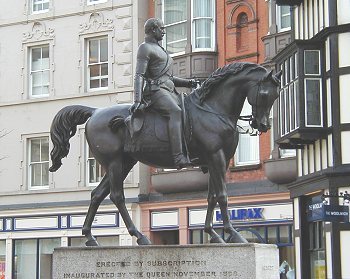 |
That is a favourite story about one of Wolverhampton's
best known landmarks. It is not true. No one who knows anything, or even
a lot, about horses can find anything wrong with it; contemporary
records record nothing but the usual cheers; Thorneycroft died in his
bed many years later at the age of 70. And the same story is told in
many towns of many similar statues, the one at Halifax being a case in
point. Other equestrian statues of Albert are at Liverpool and Windsor
Park. |
| This statute is a perfectly good if not outstanding
Victorian equestrian statue but has become one of the most readily
identifiable images of the town and has adorned many publications about
the town.
But, oddly, many people seem to have no
idea who it is; the statute is always referred to as "the man on the
horse" or, simply, as the Moth. |
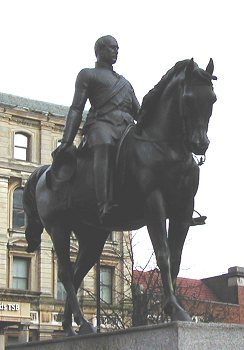 |
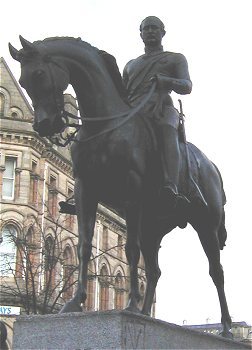 |
From time to time His Highness has moved around the
square, in order to fit in with various traffic schemes. At one time the
underground public lavatories were under Prince Albert's nose; now he is
back to within inches of where he started out, doffing his cap in the
direction of the Information Centre.
He spent decades with the town's
fire escape ladders propped up beside him. He has suffered the usual ill
treatment of public statues, such as the occasion when, for some days,
he had a waste paper basket stuck on his head, looking for all the world
like a fez. The reins were broken off by a drunken reveller on VE Day
and not replaced until 1991 when the statue was given a through clean. |
| In 2006 the city council expects to revamp Queen Square yet
again. But in 2005 they consulted the public on their proposals and
met a good deal of opposition to the idea of putting a water feature
round poor Albert with a sort of cascade below him. And the
idea of putting a sort of open air cafe behind him met with similar
disapprobation. The revamp is going ahead (2007) without the
cafe and simply with the road being moved and the surface re-paved.
Noszlopy and Waterhouse say that the Prince is shown in the uniform
of a Field Marshall with the Order of the Garter prominently
displayed, and he is gently reining in his horse and taking off his
hat to acknowledge the crowd.
The Queen had leant uniform (and Albert's favourite charge,
"Nimrod") to Thorneycroft and visited him several times in his
studio while the statue was being made. She recorded in her
diary that it is "on the whole good". The Times
gave it high praise.
The granite pedestal was paid for by George Lees Underhill, a
local solicitor and town councillor, who chaired the Memorial
Committee which raised the public subscription which paid for the
statue itself. |
| The Queen's visit to Wolverhampton, of which the unveiling
of this statue was the cause and centre piece, is one of the great
stories of Victorian social life in the town. Suffice it to say here
that the town's historic centre, until then known as High Green, was
re-named Queen Square to mark the occasion. (And note: Queen Square, not
Queen's Square).
 |
Read about Queen
Victoria's visit to the town |
|
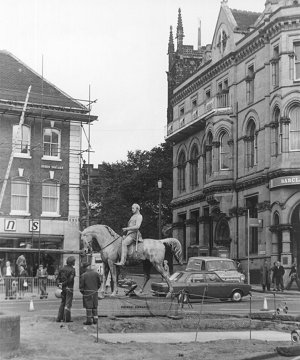
Albert's last-but-one move in September 1974. Photo - David Clare. |
 |